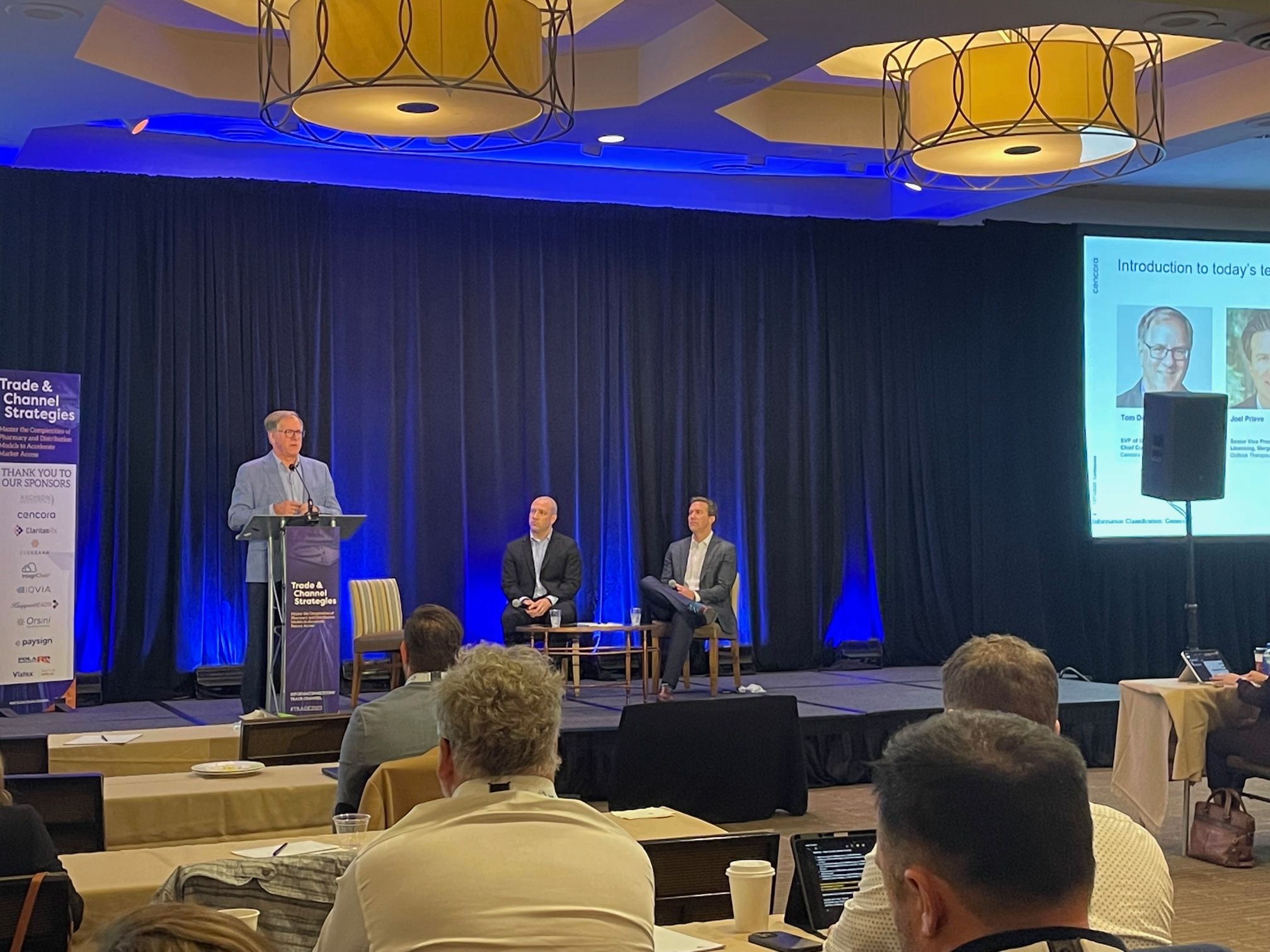Trade & Channel Strategies 2023: Aligning Patient Access
Panel uncovers ways to handle the increasing complexities and risks surrounding commercialization.

As Day 1 of Trade & Channel Strategies progressed, attendees were treated to a panel on “Aligning Patient Access Through Integrated US and Global Support Channel Models.” Tom Doyle, SVP of sales and chief customer officer for biopharma services at Cencora, the panel’s moderator, was joined by Josh Guinter, the wholesaler’s senior director of channel strategy and product access for strategic global sourcing, and Joel Prieve, Outlook Therapeutics’ SVP of commercial operations.
The goal was to discuss the latest obstacles related to commercialization and how to be prepared to face them by sharing experiences on these complexities and risks; how to tackle fragmentation of commercialization services; and how working with integrated commercialization partners can make for a more seamless product launch.
Prieve who was initially hired by the late clinical-stage biopharma company two years ago to establish pre-commercial efforts, was given the task of building all of the infrastructure with hopes of having a successful launch.
“We're a small company,” he said. “The very first drug to market is not even FDA approved yet; it’s under review. But you need help, you need a partner, as you don't have a lot of money. And you need somebody that's going to not only help you commercialize, but also mitigate risk and be flexible when things change, because things will change, just right now, we have a delay with our application that involves us having to pivot, so we're focusing on Europe now, which is going to be first for us when we thought the United States would be.”
In other words, plans can change at any given moment, and stakes are high. The company is currently developing LYTENAVA (bevacizumab-vikg), for the treatment of wet age-related macular degeneration (wet AMD), diabetic macular edema (DME), and branch retinal vein occlusion (BRVO). If ultimately approved by the FDA, it will have 12 years of marketing exclusivity.
When asked by Doyle concerning key considerations and factors to avoid, Prieve noted that retina is a very small, specialized market, predicting 2500 retinal specialists in the US. The market also represents 85% to 90% position class of trade, with a minimal of amount going through hospitals.
Another challenge lies in the 3.5 million administrations that the company is pursuing: How can one make sure that patients get off therapy, it's affordable, they can access the medication they need, and how does one design a hub that will be quick to get the benefits verified and the prior authorizations approved. Plenty of payer research is needed. But in the end, the popularity of these position and product portals cannot go unnoticed; hubs utilization is “through the roof.”
When it comes to additional spaces for success, Guinter expressed his agreement with the idea of treating each launch and each product differently, as opposed to trying to copy and paste by using a cookie-cutter approach. It’s imperative to try to understand what's best for the patient, he added, what's best for the product, and how do we design a model that works for them.
After all, proper coordination from pre-clinical through launch is only growing in importance. Data presented indicated that this early-stage coordination can increase probability of launch success.
Doyle also raised the question of how Guinter envisions the balance looking like—from both the channel configuration and connection to the services—in order to make for a successful therapy.
“I think it continues to evolve. Going into the cell and gene space as well, it's taking what's currently known and within the market of specialty products, and that gets amplified in the sense of cell and gene,” Guinter opined. “Regulatory complexity is much higher, and storage and handling begins. How does that vary across the different providers sites, but also from the patient management's in the end? [Thinking about] Event management at those sites of care: as they get lower adverse drug reactions for some of the newer products, does that shift into some of the community oncology space, and then how we orchestrate that to your point to make sure that we can support those no matter what those capabilities are?"
Reference
Aligning Patient Access Through Integrated US and Global Support Channel Models. December 11, 2023. Trade & Channel Strategies, Philadelphia.